
The transition from the wet into the dry season is normally marked by a variety of changes that are both easy to see and hear. So far those changes have not been that obvious for 2017. The unusually heavy rains during November and December last year would appear to have delayed, if not completely altered a lot of plant and animal behaviors. But now, some two months after expecting to see certain changes, they are beginning to take place.
There has been a late start to the flowering season for many trees. This week some of the trees that would have been expected to flower in December are now flowering in February. One notable example is the Ajo Tree, (Caryocar costarincensis). Its bright lemon yellow blooms can now be seen littering the forest floor on many of the trails. Take a trip up into the tree tops on the canopy platform and you will find many species of tree crowns covered in flowers. This is turn attracts many butterflies and they can be seen flying from flower to flower, tree to tree, all around the sunlit forest canopy.

Ajo Tree, (Caryocar costaricensis). Flowers.
Rain forests in general can be windless areas. The forests of the Osa Peninsula experience very little wind except when a heavy rain approaches pushing a pocket of air in front of it. The plants therefore have to rely for the most part on animals to carry out both pollination and seed dispersal. Bats are very important pollinators and seed dispersers. Bats prefer musky odors to sweet odors. This results in the plants emitting various scents that humans would not be expecting, being used to the more fragrant sweet smell of flowers. The bats however are attracted by the scent of garlic. The nectar feeding bats have a long muzzle and a long sticky tongue. While they are feeding on the nectar, the long anthers of the flower dust pollen over the head and shoulders of the bat which then flies off to visit another flower transferring the pollen and effecting pollination.
In subtle contrast to the green of the hedgerow vegetation are the strong purples of the Morning Glory, (Ipomea) which are currently flowering. This is a vine which wends its way through the hedges. The purple color is attractive to insects. The flowers prefer the full sun despite the name “Morning Glory” which refers to the flowers unfurling at first light of dawn.

Morning Glory, (Ipomoea sp)
The butterflies are starting to be seen in greater numbers but the levels fall a long way short of what would be expected at this time of year. The height of the butterfly season is between February and March but so far the visible populations, particularly of some species, are noticeably down.
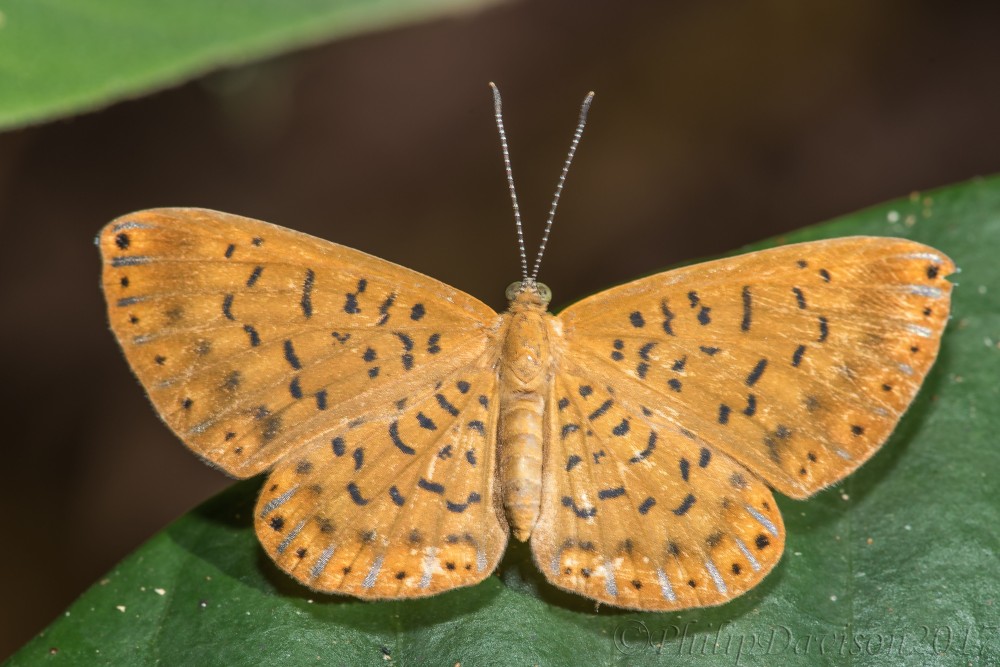
Metacharis victrix
At night the number of amphibians is starting to diminish. For some time now the number of species has reduced to 4 or 5 but the number of individuals of each species has dwindled to only one or two hopeful males calling for a mate. It is highly unlikely that there will be a response at this time of year. The Savage’s Thin-fingered Frogs, (Leptodactylus savagei), are increasing slightly in numbers around the pond. As the area continues to dry the pond is the only damp refuge and these large amphibians start to congregate around the pond edge sometimes entering the water where they can be found floating.
Floral Descent
Whereas many of the plants have been slow to flower, some of the orchids have not.. To see the orchids you generally need to up in the forest canopy, 88% of the Costa Rican orchids are epiphytic, they are up at the top of the trees. But occasionally you may be lucky to see some that have found a suitable location nearer to the ground. When not in bloom it is easy to miss them as many orchids have small insignificant flowers, but not all, others when in flower can have quite a showy display. Orchidaceae is a very species rich family of flowering plants rivalled only by the Asteraceae or daisy family in terms of numbers. Being so diverse makes them hard to identify. Many people admire them for their aesthetic, if sometimes subtle, beauty. They are therefore a group of greater interest to orchid specialists in terms of identification and geographical distribution. Equaled by the diversity of species and form of the flowers are the number of ways in which orchids become pollinated. Some of them have evolved means of attracting pollinators that would seem to be, on first reading, the stuff purely of science fiction.
Around the gardens and forests there are orchids that are slightly more obvious. Growing on some of the garden trees as epiphytes are the white-flowered, night-perfumed Lady of the Night, (Brassavola nodosa). At night the white flowers give off a heavy sweet perfume that attracts in hawkmoths. The moths hover in front of the flower and using the long proboscis probe for nectar. While doing so they become covered in pollen which is then transferred to the next flower they visit. Not too far away growing in the borders are the Bamboo Orchids, (Arundina graminifolia). This is a terrestrial orchid native to south east Asia. It is however widely grown in Costa Rican gardens. The purple bee pollinated blooms are born on long thin stems that resemble a bamboo stem.
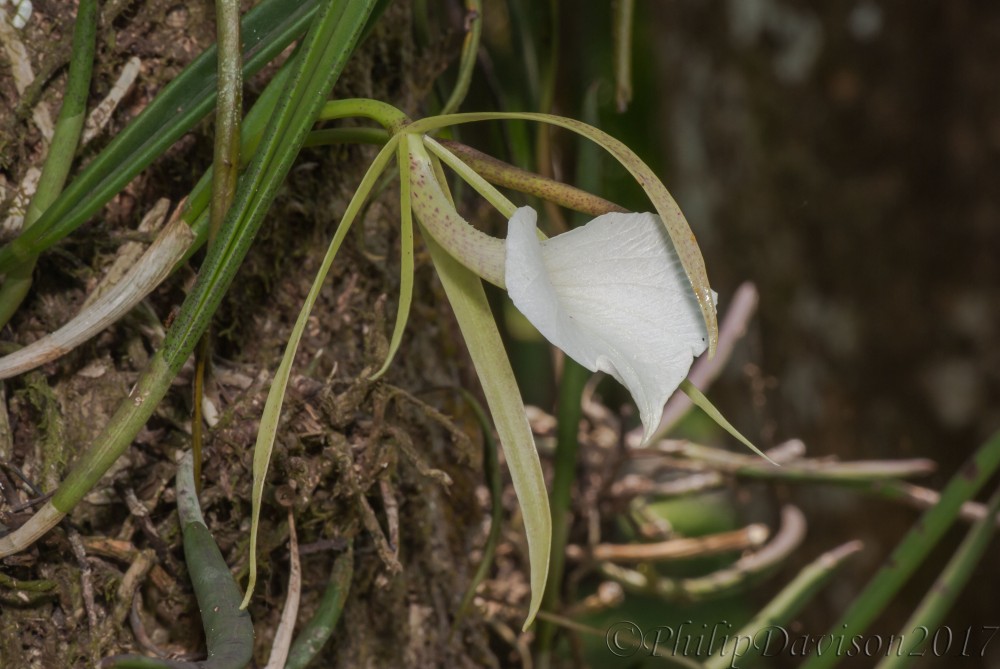
Lady of the Night, (Brassavola nodosa)
On the forest trails growing low down and in locations near to water you may find, (Stanhopea cirrhata). Stanhopea species emit an scent that attracts certain species of orchid bee. The males gather the scent which they mix with other plant volatiles to produce their own perfumes. The structure of the Stanhopea orchid is such that while the bee is gathering the scent a pollen package is attached to the bee which unwittingly transfers it to the next orchid it visits.
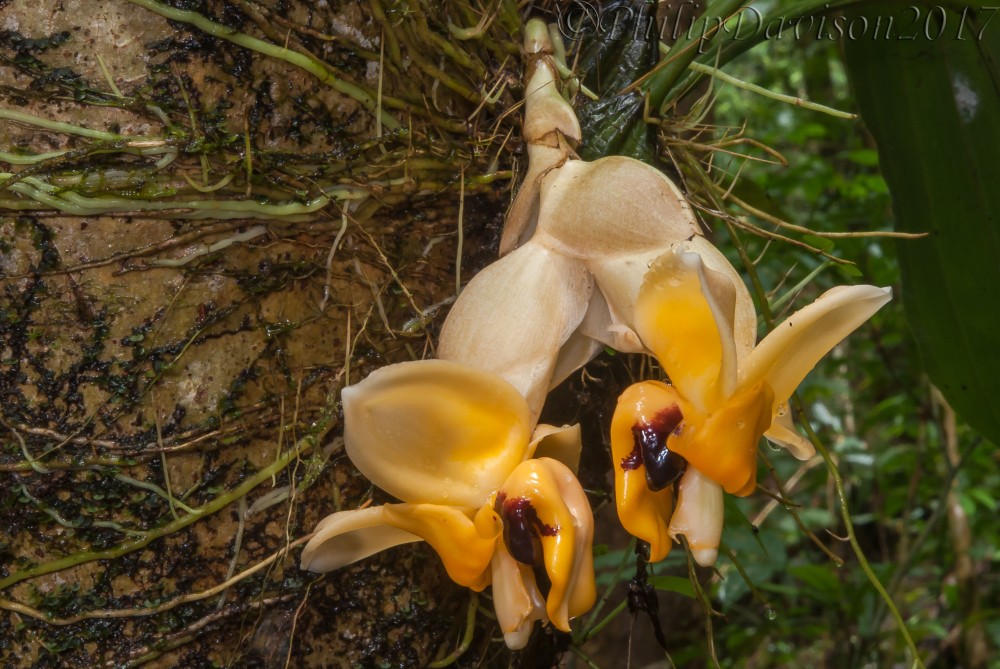
Stanhopea cirrhata
There are some orchids whose flowers are as green as their leaves. Numbering amongst them is the Vanilla Orchid, (Vanilla planifolia). In the wild Vanilla orchids are pollinated by orchid bees but when commercially grown and pollinated by hand. Growing on the sides of trees are some of the green flowered Epidendrum Orchids. There are about 160 species of Epidendrum in Costa Rica which makes them a little difficult to identify.
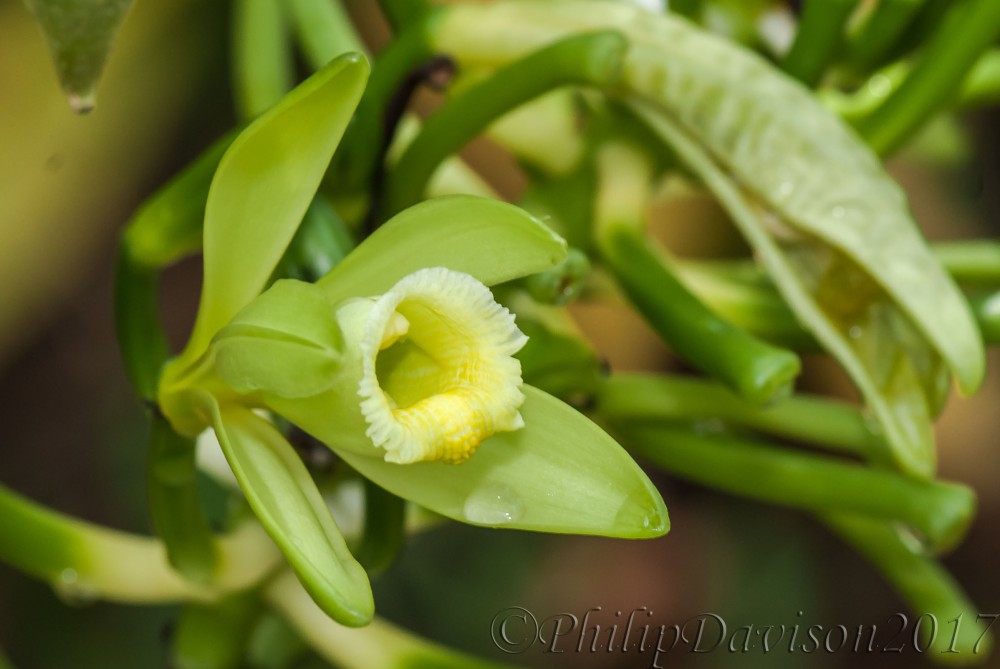
Vanilla Orchid, (Vanilla planifolia)
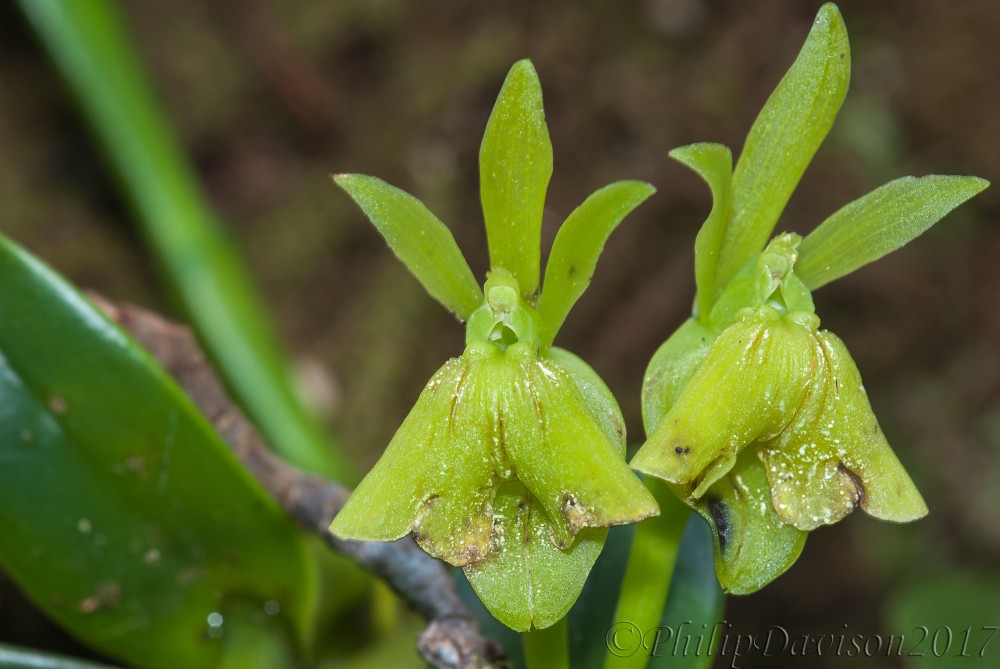
Epidendrum sp
Dragons and Damsels
If you spend enough time by any body of water around the grounds then you are likely to see some of the Odonates; dragonflies and damselflies. The dragonflies can more commonly be found still bodies of water such as the pond whereas the damselflies seem to frequent areas closer to running water such as the creek. They can also be seen in the gardens and throughout the forest too. You can tell a dragon from a damsel when they land as the dragonflies perch with the wings out to the sides whereas the damselflies perch with the wings folded together over the back.
You have to have patience to photograph dragon and damselflies. They react to the slightest movement near them by taking to the air. They do have favored perches though so if you set the camera up on a tripod or simply rest in a comfortable position, camera in hand, they well almost always return in short time and alight at the place from which they took off.
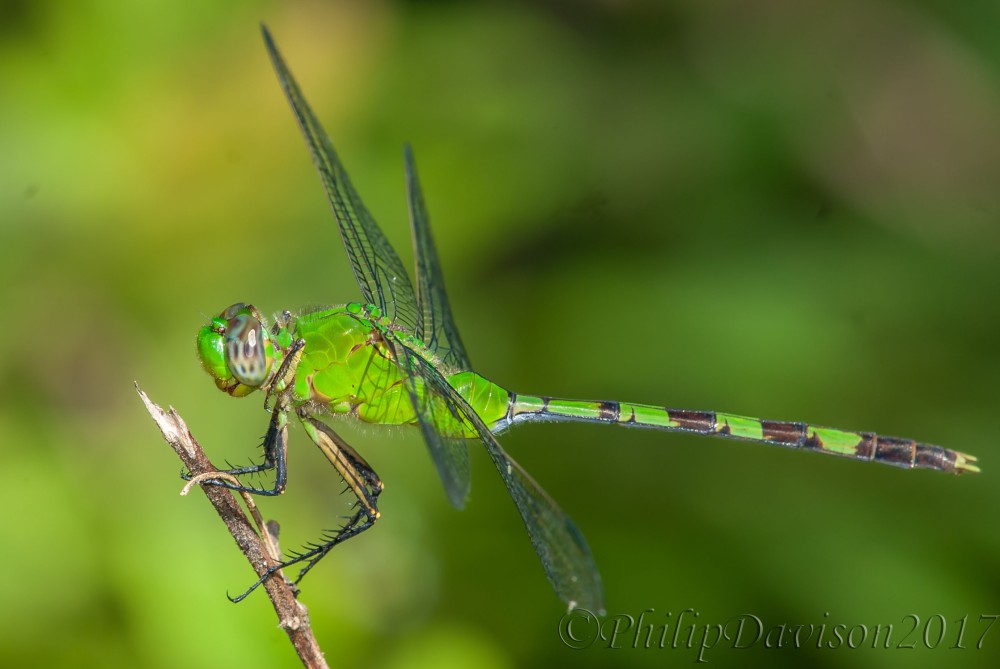
Great Pondhawk, (Erythemis vesiculosa)

Red-mantled Dragonlet, (Erythrodiplax fervida)
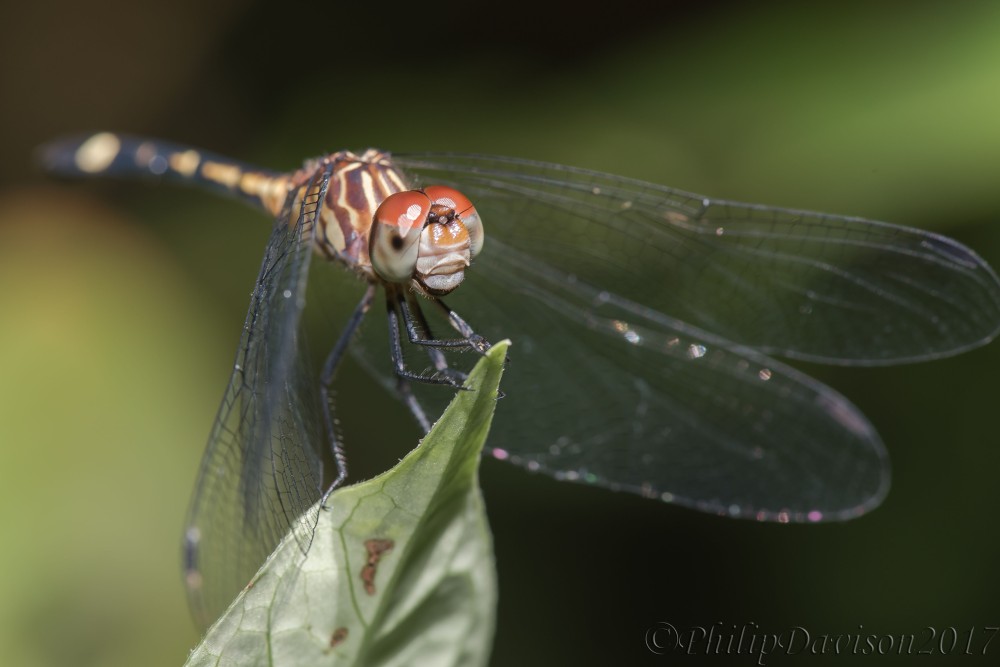
Three-striped Dasher, (Micrathyria didyma)
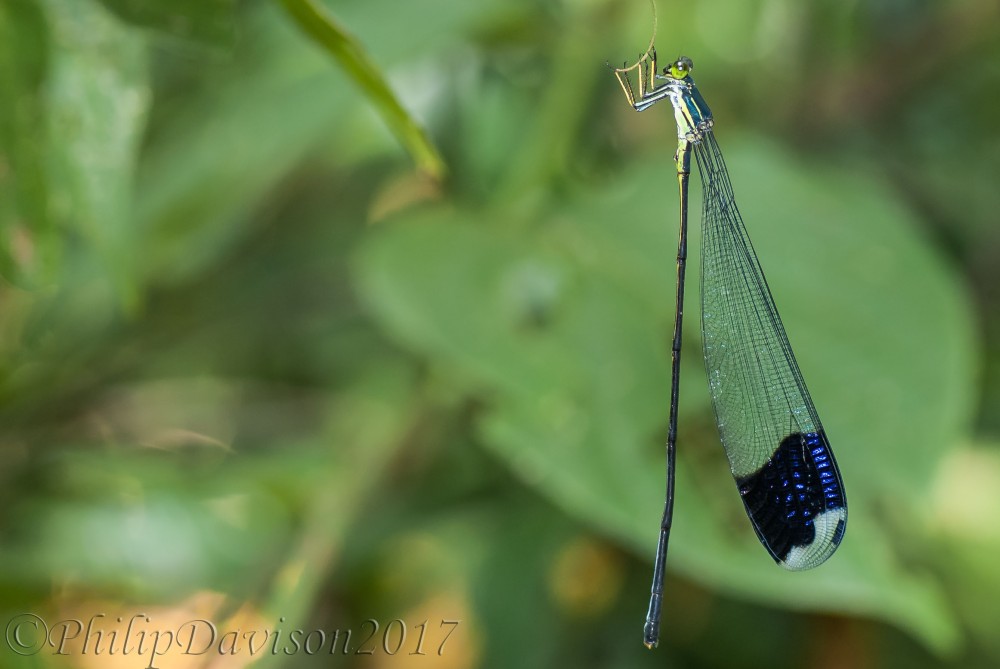
Helicopter Damselfly, (Megaloprepus caerulatus)
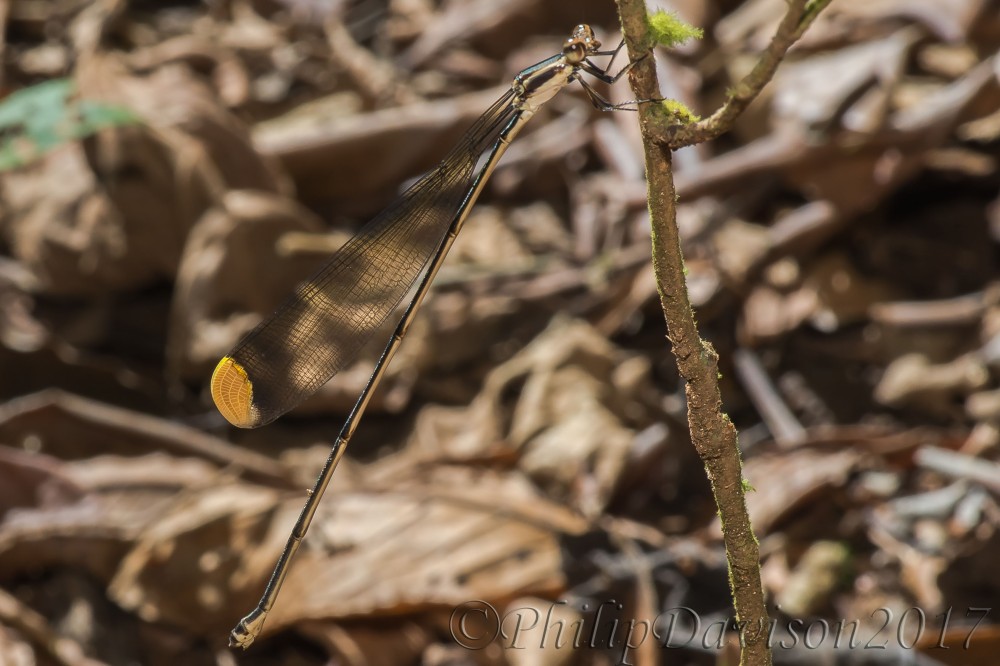
Ornate Helicopter Damselfly, (Mecisogaster ornata)
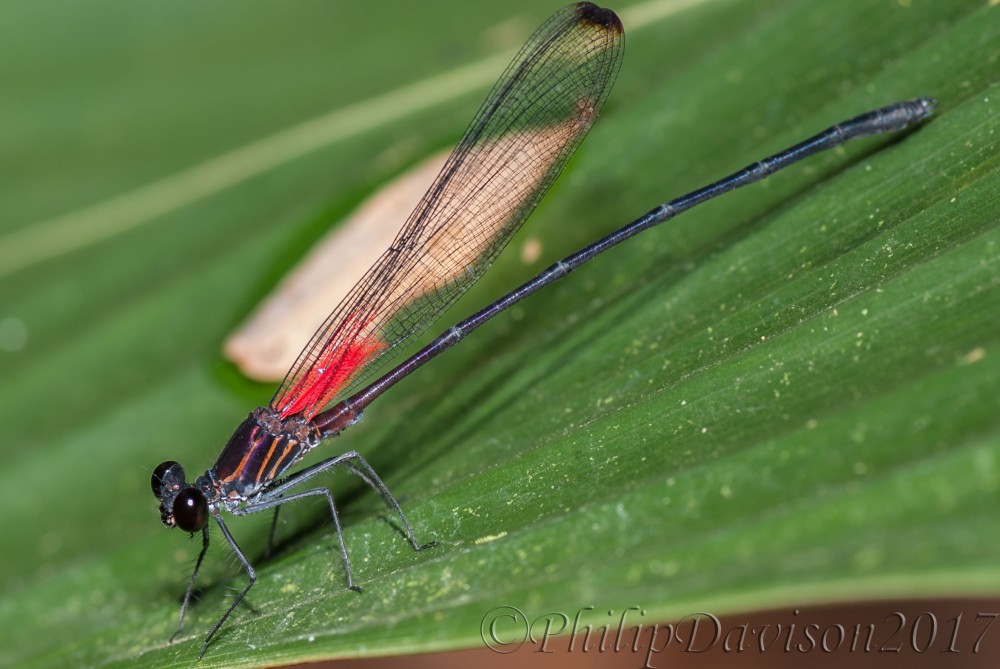
Hetaerina orissa
Philip Davison is a Biologist, Writer and Photographer Based in Costa Rica
Thanks again Philip… this blog and gorgeous photos keep pulling at us to return to Bosque… hopefully within the year… fingers crossed with this administration… if that is what it is called… a good dose of Mother Nature is sounding good to me to escape from here
Pura Vida, Fred
LikeLike
Thanks Fred. Always look forward to you and Jen visiting. Pura Vida.
LikeLike
Thank you for bringing a little bit of Bosque into the rainy Oregon winter. Will be retuning to Bosque in 6 weeks!
LikeLike
Look forward to seeing you. Bring your factor 45 because it is hot and sunny.
LikeLike